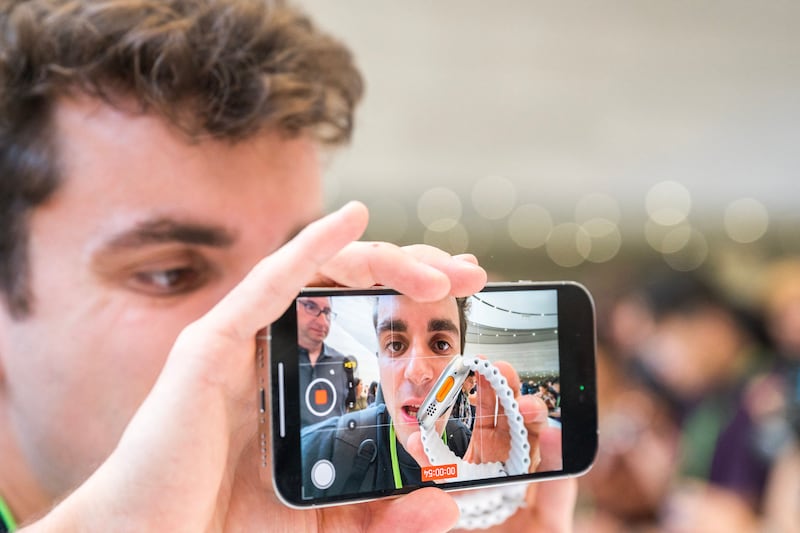When Apple unveiled its new iPhones and watches, it made another key announcement too: it has developed its first carbon neutral product.
The latest Apple Watch is the first product that Apple point to as carbon neutral, a development that has come years ahead of schedule for the tech giant. It is likely to only be the beginning for Apple products though, with the group’s ambitious targets for its environmental impact set to spur more such innovation.
“We believe Apple chose Watch as a beachhead for carbon neutrality because the small size of these products makes their manufacturing process less intensive,” said Leo Gebbie, principal analyst, connected devices for CCS Insight. “However, lessons learned will be applied elsewhere and we think Apple is striving to offer carbon-neutral options for all its products by the end of the decade.”
Apple has been trying to improve its environmental impact for some time.
READ MORE

Will Apple’s new iPhone 15 have consumers rushing to upgrade?
[ Hands on with the brand new iPhone 15 Pro and Pro MaxOpens in new window ]
In July 2020, it pledged to make its products and supply chain carbon neutral by 2030, reducing emissions by 75 per cent and relying on carbon removal solutions to take care of the remaining 25 per cent that cannot yet be avoided or reduced.
Over the past couple of years, it has increased the use of renewable energy at its corporate offices and facilities, redesigned product packaging to eliminate as much plastic as possible, and increased the use of recycled materials in its products. The Series 9 case, for example, uses 100 per cent recycled aluminium, and the Ultra 2 has 95 per cent recycled titanium.

The new iPhone 15 uses 100 per cent recycled gold in the camera wiring and circuit board plating, recycled rare earth elements in magnets, along with 100 per cent recycled cobalt in the battery.
As part of its environmental focus, Apple is also eliminating leather accessories for its products, including watch straps and phone cases, choosing more sustainable materials instead.
“It will be fascinating to see how customers and the industry responds to Apple’s carbon-neutral branding. Our research consistently shows that consumers care about the green agenda and want tech companies to play their part here, but it’s not yet clear whether putting environmental credentials on the box will directly influence buying decisions,” said Mr Gebbie. “The decision to eliminate leather could also create some tension with partners such as Hermes, which will continue to offer ‘official’ leather straps for the Watch at the same time Apple is moving away from the material.”
The shift is especially important in the light of Apple’s own heritage. The company is based in California, where it was holding the launch event, in a part of the US that has been hit by raging wildfires and increasing drought, which is being attributed in part to climate change.
With the problems on its doorstep, it is not enough to talk the talk; Apple has to show it means business.
Apple says it has managed to reduce total emissions by more than 45 per cent since 2015. In that period, revenue has grown 65 per cent, proving that for Apple at least, this doesn’t have to be an either/or situation.
Apple’s environmental shift is marked in comparison to pre-2010, when it was criticised by environmental group Greenpeace on recycling and concerns over the use of toxic substances in its electronics. By 2017, the group’s scorecard on tech companies rated Apple at B-, just below Fairphone and ahead of rivals Samsung and Huawei.
The tech giant has made further progress since then, and in recent years has moved to make its products more repairable, something that had attracted criticism. The iPhone 15 Pro advances that further, with a new structural frame that allows the back glass to be easily replaced.
The shift to USB C should also help ease the e-waste deluge, with Apple now adopting the charger that European authorities have decreed should be the standard for portable electronics in the EU.
But not everybody is convinced of the green credentials of the new electronics. On one hand, Apple is shifting more and more to recycled components and green energy. But on the other, it ships millions of iPhones every quarter, not to mention headphones and other devices, all of which will help contribute to electronic waste in the future if not recycled correctly.
Peter Windischhofer, co-founder and chief executive of online marketplace Refurbed, noted electronic waste is a growing issue, with the production of electronics such as smartphones contributing to the exploitation of the planet’s resources.
“Innovation and further development are important, especially when it comes to technology. But even more important are responsible actions and responsible consumption. It is therefore time for us, the consumers, to rethink,” he said.
“A refurbished iPhone/device consumes 86 per cent less water in the refurbishment process compared to a new purchase, 78 per cent less CO2 is emitted and, most importantly, 71 per cent less e-waste is produced on our planet (based on research completed on the iPhone 11) when compared to a new device.
“It can be as simple as that, without any sacrifices, if we just think of ‘new’ in a new way; and not equate ‘new’ with new gadgets that we don’t really need.”














